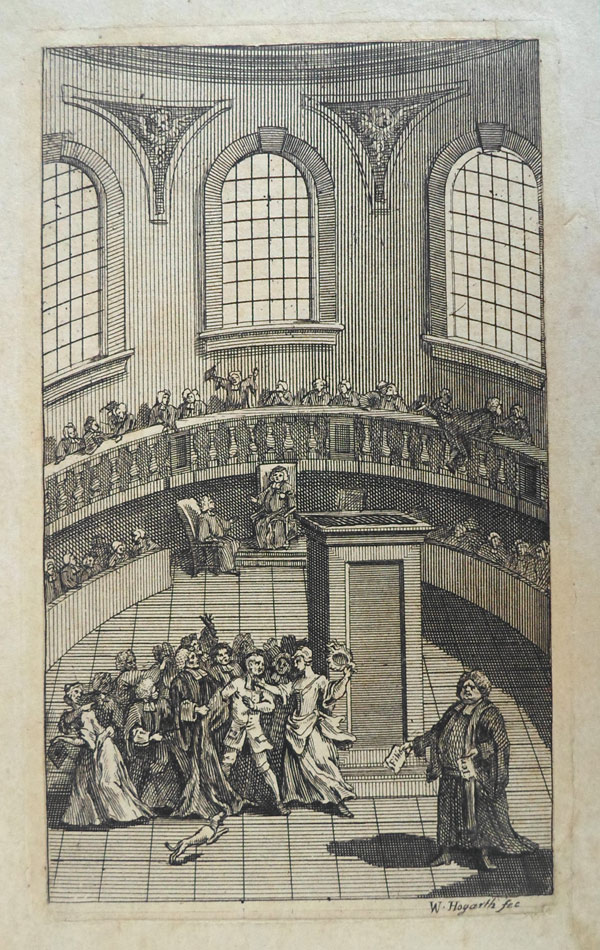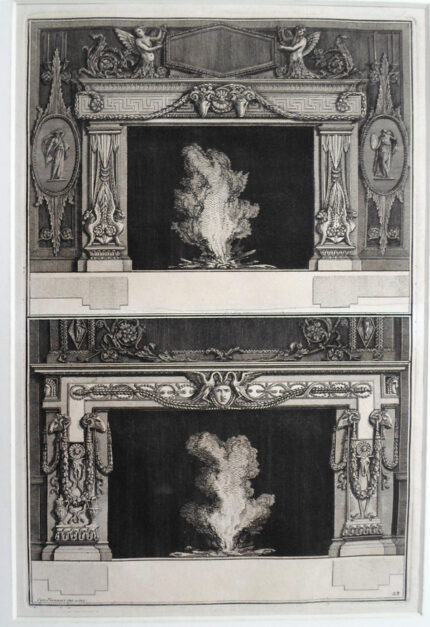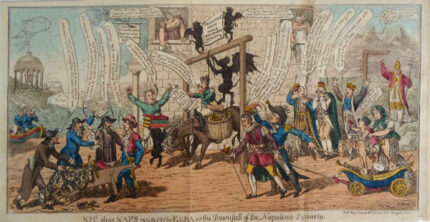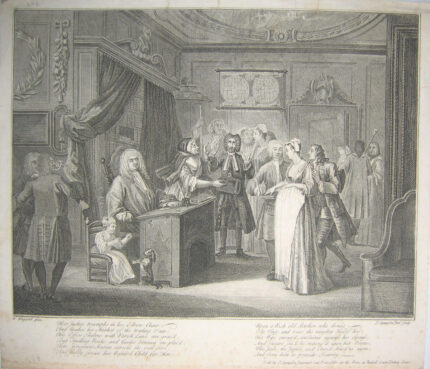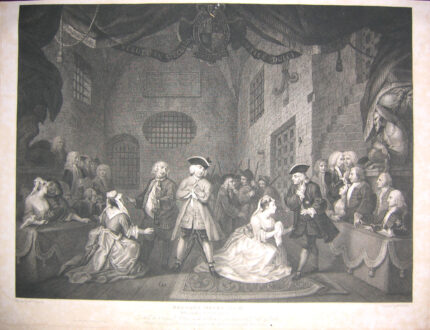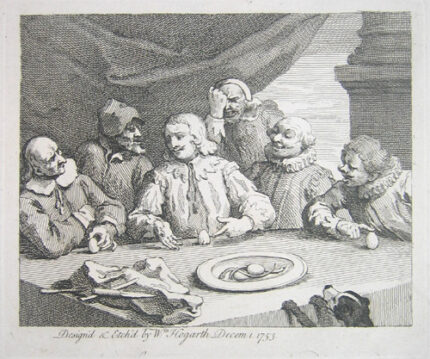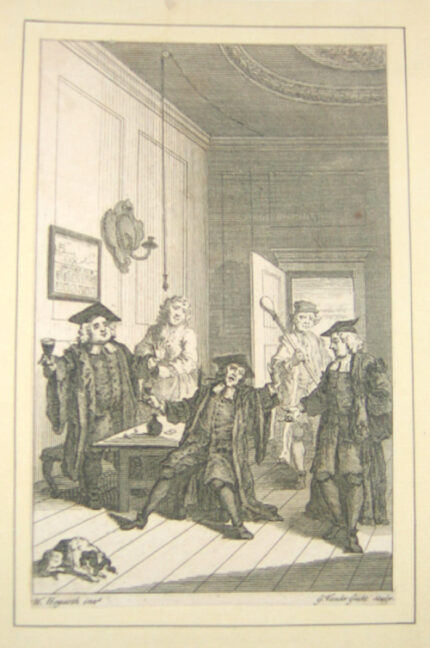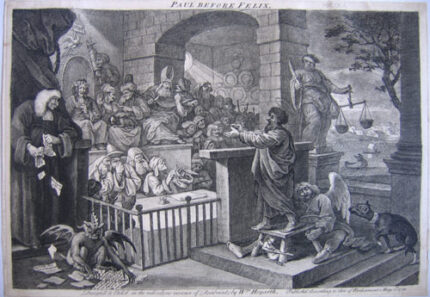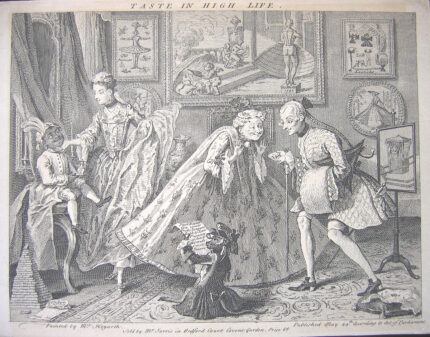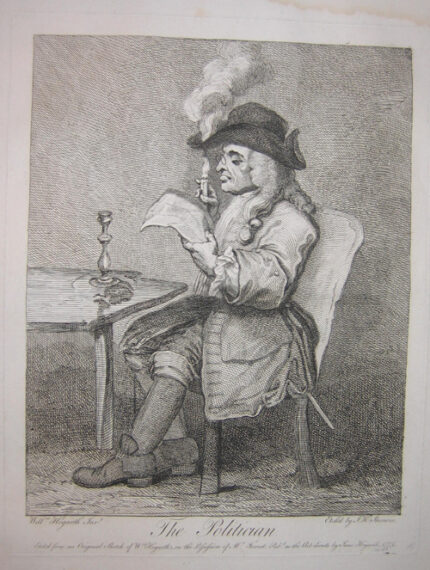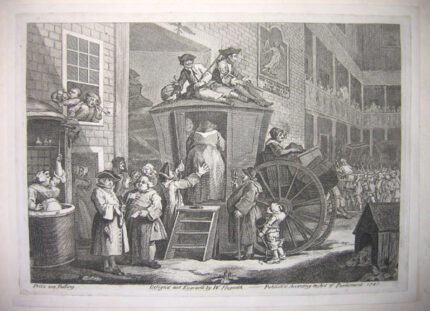William Hogarth – Frontispiece to Terrae Filius.
William Hogarth – Frontispiece to Terrae Filius, a rare, early Hogarth engraving.
The frontispiece to Nicholas Amhurst’s Terrae Filius: Or, Secret History of the University of Oxford &c. Amhurst (1697-1742), was editor of the virulently anti-Walpole periodicals The Craftsman, Terrae Filius and Pasquin.
Terrae Filius appeared every Wednesday and Saturday between January and July 1721, its purpose being to satirise the Tory principles of Oxford.
The book, however, did not appear until 1726.
The engraving shows Amhurst being thrown out of the Sheldonian Theatre, after being stripped of his wig and gown by a woman and skinny college dignitary, while a portly don tears up a copy of Terrae Filius.
There are conflicting views as to why Amhurst was sent down from Oxford, according to Amhurst the Tory authorities disliked his radical views, while the University authorities claimed he was sent down because of his profligate behaviour. Paulson 101 only state.
William Hogarth
William Hogarth, (born November 10, 1697, London, England—died October 26, 1764, London). The first great English-born artist to attract admiration abroad. Best known for his MORAL and satirical engravings and paintings—e.g., A Rake’s Progress (eight scenes,1733).
His attempts to build a reputation as a history painter and portraitist, however, met with financial disappointment. His aesthetic theories had more influence in Romantic literature than in painting.

